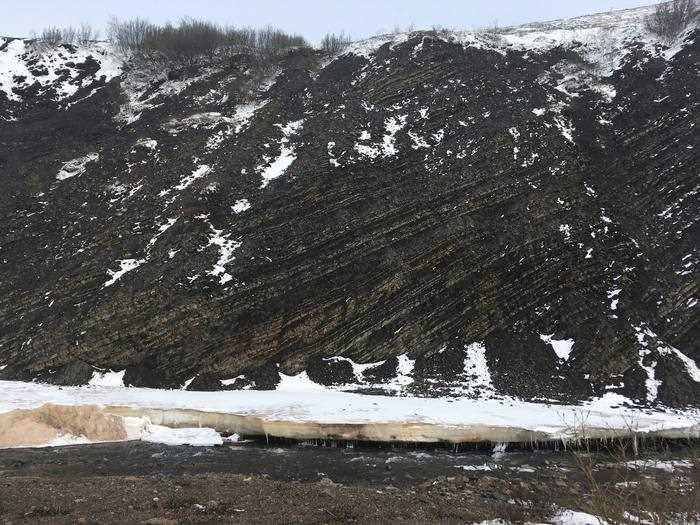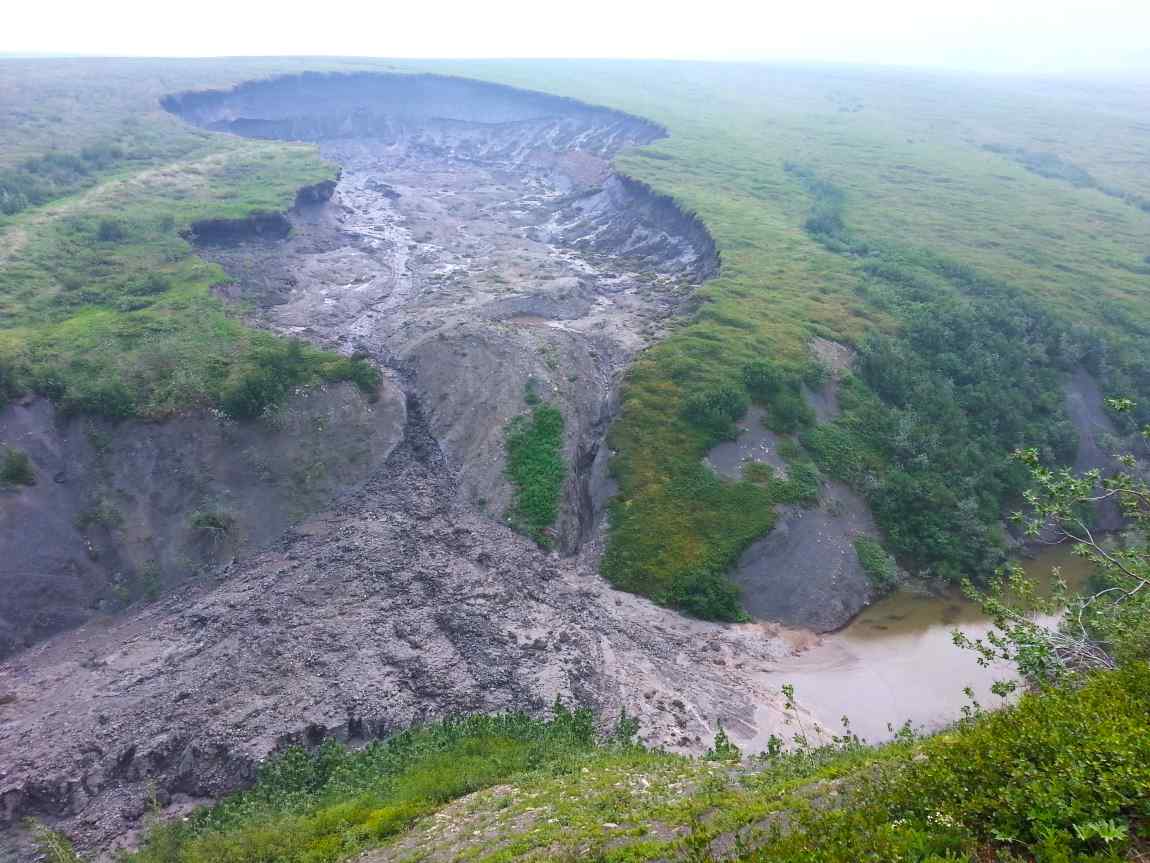Researchers from the University of Oxford’s Department of Earth Sciences have discovered that rising temperatures in the Canadian Arctic could significantly accelerate the release of carbon dioxide (CO2) into the atmosphere, spurring a dangerous feedback loop that contributes further to climate change.
Published in Science Advances, the study reveals how rock weathering in sensitive regions like the Arctic will likely intensify with global warming.
The Arctic is warming nearly four times faster than the global average, making it a critical region for understanding CO2 emissions from weathering. This process occurs when certain minerals and rocks interact with atmospheric oxygen, triggering chemical reactions that release CO2.

Specifically, the weathering of sulfide minerals, such as pyrite (commonly known as “fool’s gold”), produces acid that dissolves other nearby minerals, releasing CO2. In Arctic permafrost areas, these sulfide minerals are now exposed due to thawing ground, raising concerns that CO2 release may escalate and accelerate global warming.
“Until now, the temperature sensitivity of CO2 release from sulfide rocks and its main drivers were unknown over large areas and timescales,” said Dr. Ella Walsh, the study’s lead author. “We see dramatic increases in sulfide oxidation across the Mackenzie with even moderate warming.”
Using records of sulfate (SO42-) concentration and temperature from 23 sites across the Mackenzie River Basin, the largest river system in Canada, the researchers examined how weathering processes respond to rising temperatures. Sulfate, like CO2, is a byproduct of sulfide weathering and serves as a proxy to measure the rate of this process. Results showed that over the past 60 years (1960-2020), sulfide weathering rates have increased by 45% as temperatures rose by 2.3°C, demonstrating a rapid response to warming.
The researchers also projected that, under a moderate emission scenario, CO2 emissions from the Mackenzie River Basin could double by 2100, reaching an annual output of 3 billion kilograms. This amount would equate to roughly half of Canada’s total domestic aviation emissions in a typical year.
“Future warming across vast Arctic landscapes could further increase sulfide oxidation rates and affect regional carbon cycle budgets,” noted Professor Bob Hilton, a co-author of the study. “Now that we have found this out, we are working to understand how these reactions might be slowed down.”
One avenue of mitigation may lie in the Arctic’s peatlands. While some areas of the Mackenzie River Basin, particularly mountainous and rocky regions, showed a pronounced sensitivity to temperature, peat-covered areas demonstrated a lower rate of sulfide oxidation. Peat acts as a barrier that protects the underlying bedrock from exposure, potentially reducing the weathering process. The team believes that peatland preservation or expansion could help dampen CO2 release from sulfide weathering.
Despite the focus on the Mackenzie River Basin, similar conditions are found throughout the Arctic, where exposed bedrock, sulfide minerals, and permafrost create an environment primed for intensified sulfide weathering. This suggests the process is likely to extend far beyond this particular river basin, with implications for CO2 emissions on a broader scale.
The study underscores the importance of incorporating sulfide weathering into climate models to better predict potential carbon emissions in Arctic regions. The Arctic is incredibly vulnerable to warming, and this research highlights a previously underestimated source of CO2 that could have significant impacts on our understanding of future emissions.
Journal Reference:
Ella V. Walsh, Robert G. Hilton, Suzanne E. Tank, Edwin Amos, ‘Temperature sensitivity of the mineral permafrost feedback at the continental scale’, Science Advances 10, eadq4893 (2024). DOI:10.1126/sciadv.adq4893
Article Source:
Press Release/Material by University of Oxford
Featured image: Thaw slump on the Peel Plateau, which exposes sulfide and carbonate minerals in glacial sediments to surface weathering reactions in lower slope regions with relict ice Credit: Suzanne Tank




